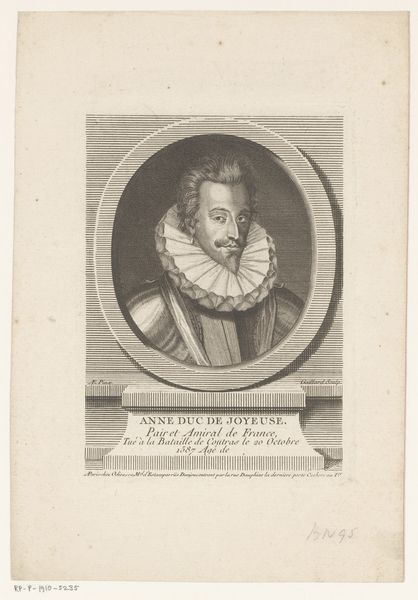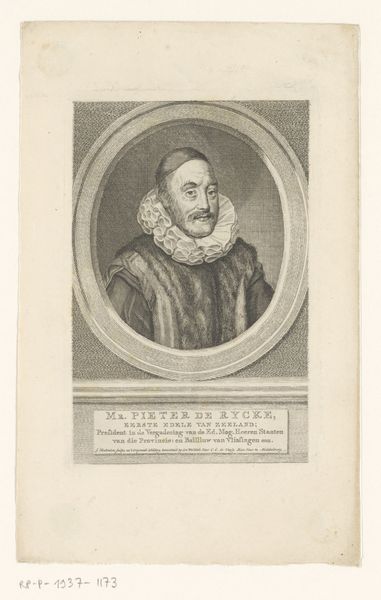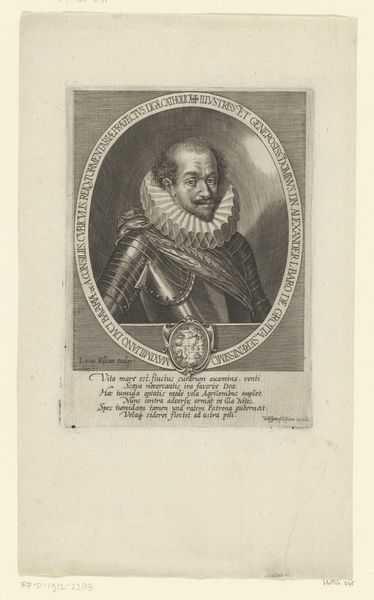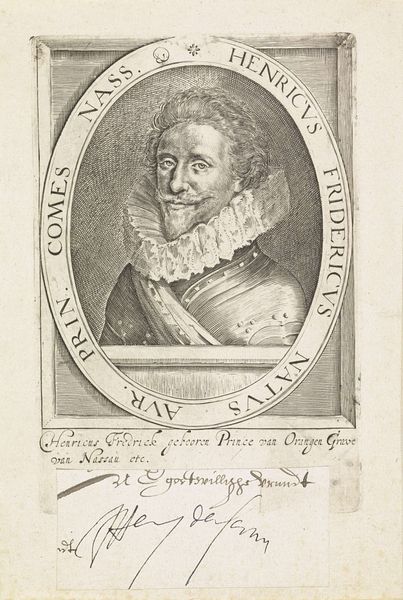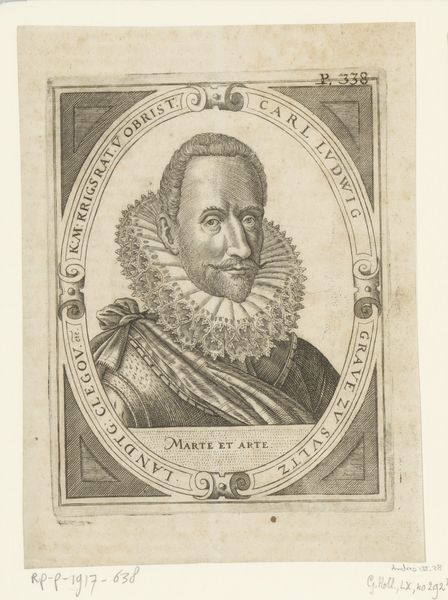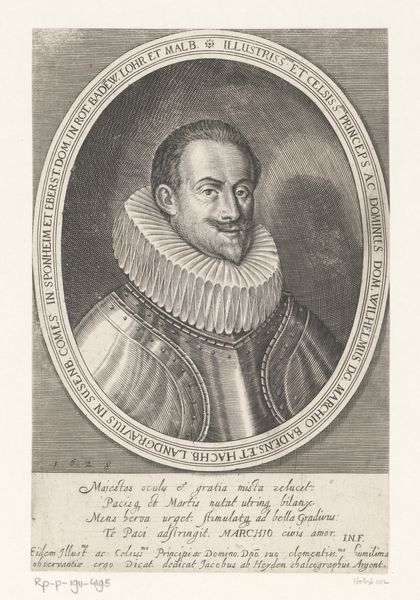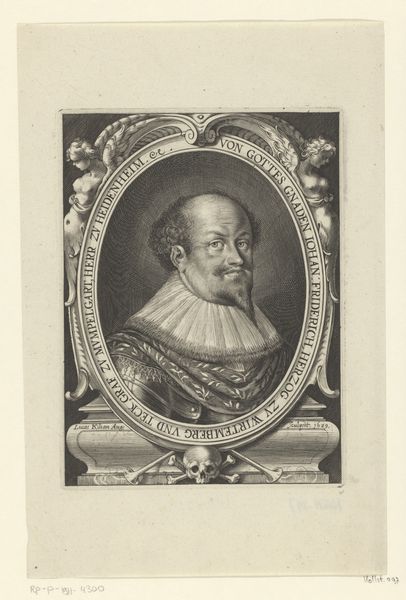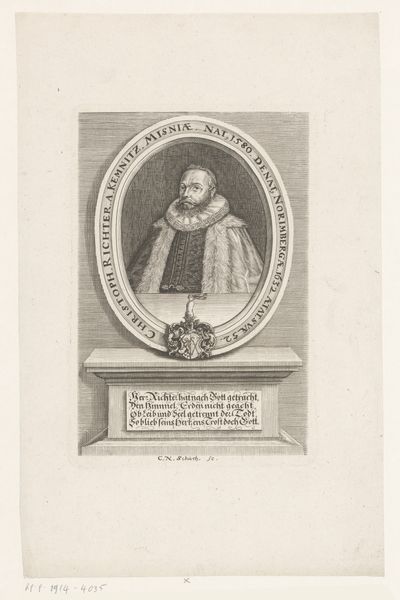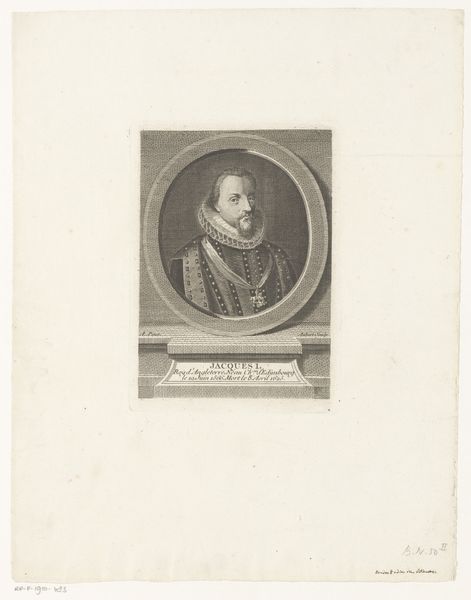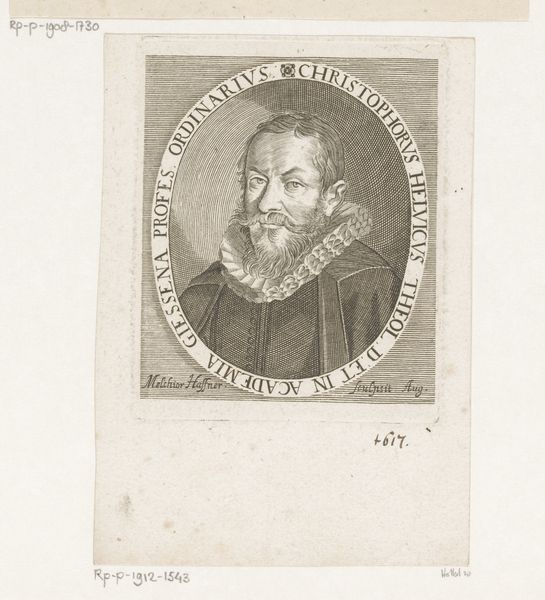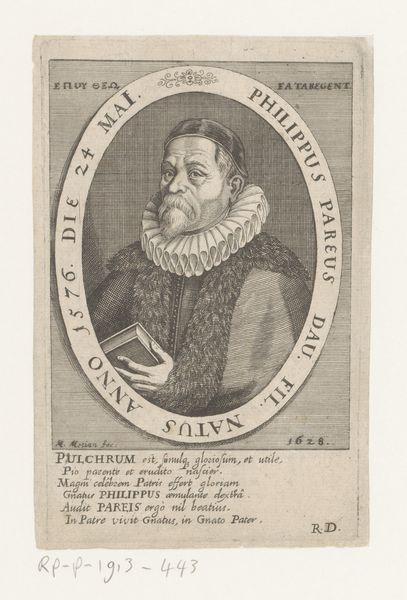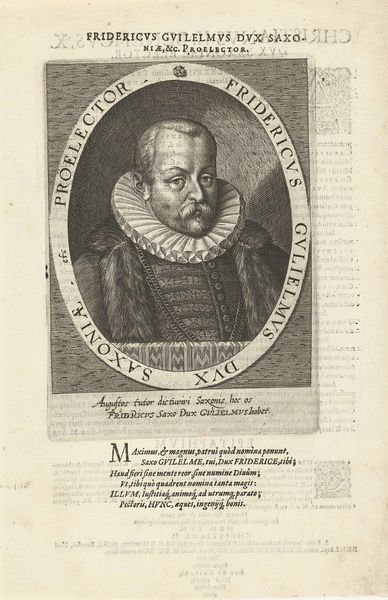
Portret van Philippe-Emmanuel de Lorraine hertog van Mercoeur 1755 - 1765
0:00
0:00
print, paper, engraving
#
portrait
#
aged paper
#
toned paper
#
baroque
# print
#
old engraving style
#
paper
#
form
#
line
#
history-painting
#
engraving
Dimensions: height 146 mm, width 110 mm
Copyright: Rijks Museum: Open Domain
Editor: We are looking at the "Portret van Philippe-Emmanuel de Lorraine hertog van Mercoeur," dating from 1755 to 1765. It’s an engraving on paper by Monogrammist AT. The aged paper and linear precision create a striking impression of dignified formality. How do you approach this piece? Curator: I approach this print by considering the relationships between its formal elements. The subject's costume immediately strikes the eye: How does the dense ruff visually compare against the solid ground surrounding the oval frame? Editor: I see what you mean! The ruff's complex, repetitive folds contrast sharply with the background's cross-hatched regularity. Almost as if the artist wanted to contain its dynamism within a formal structure. Curator: Precisely. And observe how the oval of the portrait sits above the rectangular pedestal. Notice, too, how line directs the viewer’s eye, not just to delineate form but to create tone and texture. The artist clearly prioritized linear precision and controlled modulation to evoke depth and presence. It offers a system for interpreting status in a purely visual grammar. Editor: So, the artist is using lines not just for shape but to tell a story about texture and even status. Curator: Absolutely. And further, the composition asks: how does line denote not just a man, but *this* man? This duke? Editor: I now recognize how much the artist has used contrast in texture to catch your attention. This close observation truly spotlights form! Curator: Indeed. This focused exercise of aesthetic appreciation has enabled new interpretive routes for both of us, and this is precisely why a formalist approach can yield a greater understanding.
Comments
No comments
Be the first to comment and join the conversation on the ultimate creative platform.
